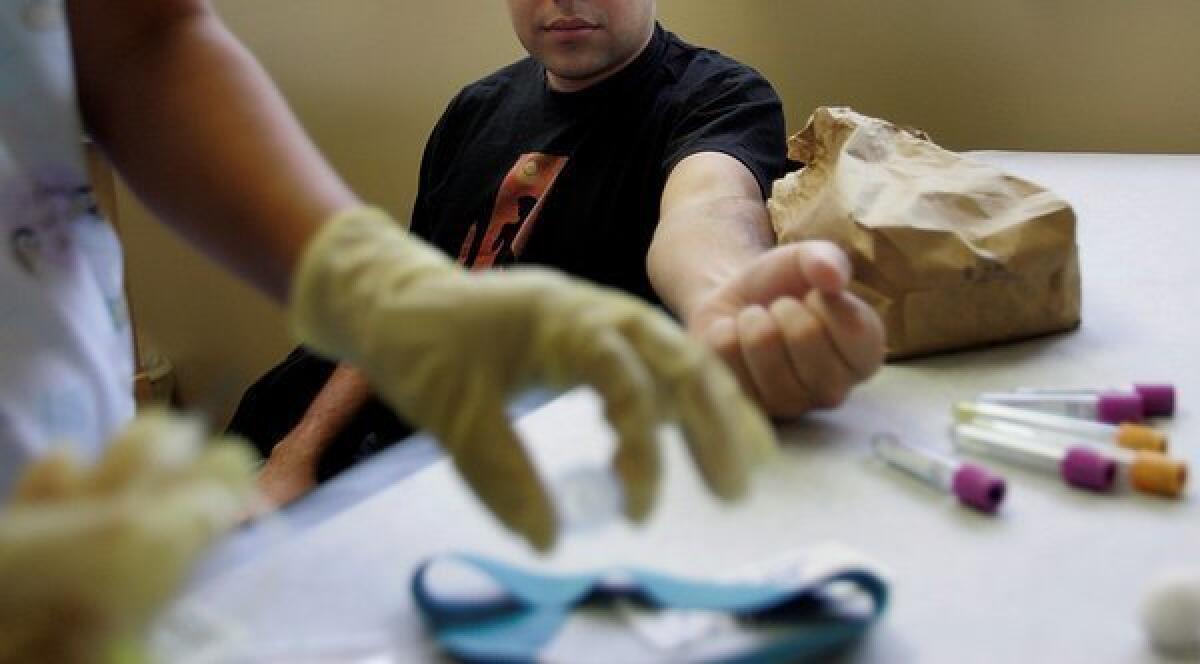Studying drug-resistant HIV in Los Angeles County

Widespread use of anti-HIV drugs in Los Angeles County could reduce new AIDS cases by almost 40%, but would also double the number of cases in which the virus had developed a resistance to drug therapy, according to a USC and Rand Corp. study.
The paper, published Monday in the journal Clinical Infectious Diseases, comes in response to growing support for the so-called test-and-treat method of treating HIV, the virus that can lead to AIDS. Such policies call for universal testing and rapid treatment of HIV patients with a combination of antiretroviral drugs.
Earlier this month, doctors said they had functionally cured a newborn of HIV after treating the infant quickly with antiretrovirals. Last week, a French medical study reported that early drug therapy appeared to be linked to the cases of 14 HIV patients who failed to get sicker when they quit taking their medication.
Though both of those reports seemed to lend weight to the argument for early treatment, opponents say that widespread use of early drug therapy may lead to more resistant strains of the virus.
The study published Monday examined just how many new cases of drug-resistant HIV would result in Los Angeles County if test-and-treat policies were followed here. Lead study author Neeraj Sood, a clinical pharmacy professor at the USC Schaeffer Center for Health Policy, and colleagues used national and local HIV tracking data from 2000 to 2009 to create a mathematical model of the disease’s spread.
Los Angeles is the county with the nation’s largest incident population of HIV. Study authors determined that if the county adopted a test-and-treat policy now, in 10 years it would see a 34% reduction in new infections, a 19% reduction in deaths and a 39% reduction in AIDS cases. However, the county would also experience an increase in the number of cases of drug-therapy-resistant HIV -- an increase from 4.70% to 9.06%.
Study authors said that it was unclear how this increased resistance would affect the course of the HIV epidemic but that health officials should consider it when evaluating treatment policies. They also said that by just increasing testing and not changing treatment protocols, patients would see only half the benefits of a test-and-treat plan, but there would be no increase in drug resistance.
“With such uncertainty about the course of multi-drug resistance (MDR), it is unclear whether benefits from increasing test-and-treat outweigh costs of increasing MDR,” the authors wrote. “If policymakers are risk-averse, a more cautious approach to HIV prevention might involve more focus on testing without changing treatment guidelines to cover early-stage HIV.”
Return to Booster Shots blog.
Follow me on Twitter @montemorin




